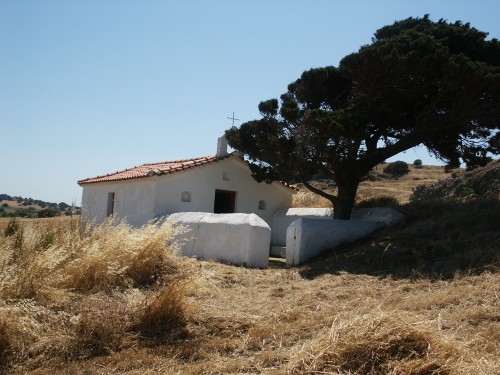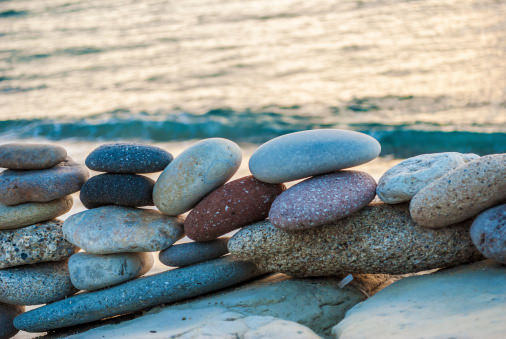
Apart from rare landscapes and special natural beauties, the nature gifted Greece with sources of important healing properties. The thermal baths are part of the national wealth of the country, and their healing properties have been known since ancient times. The thermal natural resources are scattered in the Greek territory, while the waters of these springs differ from the usual, either due to their high temperature or due to the presence of rare active ingredients. These waters are characterized as mineral due to their temperature or general chemical composition. In addition to the cold metal springs, there are also the hot springs, which contributed to the creation of a branch of treatment, the thermal hydrotherapy (thermalism).
Thermal Hot Spring
DISCLOSURE OF SPA SPRING GOVERNMENT GAZETTE 226 / 9-10-2001
DATA FROM THE ARISTOTELIO UNIVERSITY OF THESSALONIKI
| CATION | ANION | ||
|
|
According to an investigation of the characteristics of water by the Aristotelio University of Thessaloniki, the waters of the thermal spring are mesothermic (39-43 degrees Celsius), meteoric, oligometallic and hypotensive with treatments indications for the following symptoms: Rheumatism, Arthropathy, Arthritis, Osteoporosis, Spondyloarthritis, Nephrolithiasis, Cholelithiasis.

Therma is a hot spring located near the village of Kornos in Lemnos. The water is suitable for both drinking and bath therapy. The water of Therma gushes from two sources. It comes from a depth of 1200 meters and has a temperature of 42-44 degrees Celsius. It is thermal and is recommended for both: bath therapy (arthritis, osteoporosis, rheumatism, arthropathy, vertebral arthritis) and drinking therapy (nephrolithiasis, gallstones). It is odorless, low hardness, weakly radioactive and slightly alkaline with pH = 8.55. Contains a minimal amount of salts, is clear and delicious.
It is used as a drink by many Lemnians, who fill their bottles from the old fountains, which were built by the expense of the Egyptian Dimitrios Hamos in 1908. During the Turkish occupation, the building housed a hammam.
In the year 1770, Tzezaerlis Hassan Pasha built the main building and communal baths for the health of the inhabitants.
The history of Therma goes back to the Homeric era, while according to the legend, the god Hephaestus was led to Therma by the inhabitants of Lemnos, the Sintians, to heal his wounds after his fall from Olympus.
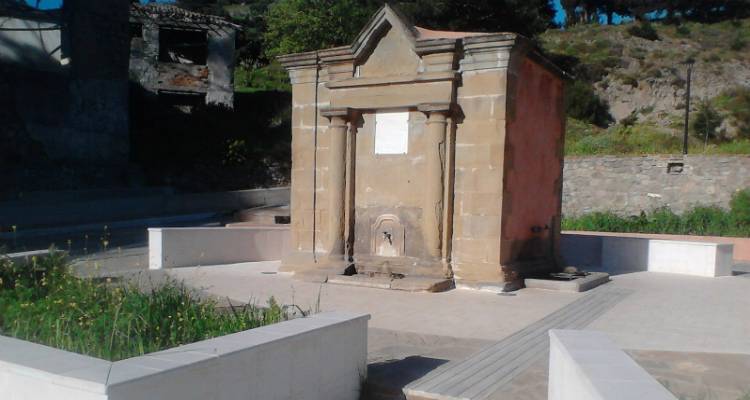
History of Therma
The baths operated until the first post-war years. In the interwar years many urban families of Myrina used to go to Therma every Saturday for their weekly bath. In 1928-30 Athanasios Vafeas made an attempt to remake the place, which attempt was continued after his death by his sons Constantinos and Otto. They bought land, planted trees, built a hotel and a bar, but then they stopped and their effort was left unfinished.
Recently, the buildings were restored and they are in operation again, at first by Giarmadouros Evangelos and then, until today, by Charalambos Halamandaris.
The Thermal Baths now operate with the most modern methods of spa therapy, but also as a center of rejuvenation and spa, with the parallel promotion of products with raw materials from the island of Lemnos.
Therma in the texts of foreign travelers
The first written reference to Therma – as far as we know – is that of P. Belon, a French physician and naturalist who came to Lemnos in 1546. Belon noticed that on the island there is a source of hot baths, which in the common language the Greeks call Thermes, and that its water is not as hot as others. Because you can dive into it as soon as it comes out of the spring, which does not happen in other baths… Also, there is no large building, but only a small room where anyone can go undress and then move on to another room, vaulted. There is only a large basin of polished stone, which had long been used as a sarcophagus. The supply of this source is not large, so they can not bathe more than one or two at the same time.
About two centuries later, in 1739, R. Pococke, an English jurist and clergyman, made a brief reference to Therma. The same goes for the French aristocrat Choisseul-Gouffier who visited Therma in the spring of 1785, insisting mainly on the composition of water. The English botanist and physician J. Sibthorp noted in his diary that he visited the area of Therma on September 21 and 22, in 1794. It seems that nothing impressed him in the baths. He made no comment. The Englishman P. Hunt came to Lemnos at the end of the 18th century. He noted “four miles away from the Castle (so they called today’s Myrina), we passed a Greek village called Chorous (probably the current village of Kornos), where there is a hot spring, still called Thermia. On it, the great Hassan, the Kapudan Pasha, built a comfortable bath and an inn or guest house for the visitors who frequent here for its hypothetical thermal properties. When we arrived, several people were bathing. The procedure is similar to that which is used in a Turkish hammam. That means, at first a strong sweating is caused, then, with a strong rubbing with a hair glove, the pores open and the joints relax. The water we tasted at the spring was very hot and soft, but no metallic impurity was felt”.
In the middle of the 19th century, in 1858, the German archaeologist A. Conze, noted “we reached the hot baths of Lemnos, at the foot of Mount Elias, with half-ruined facilities for guests who bathe and drink this water because it is considered a cure for rheumatism and skin diseases”. The clergyman H. Tozer in 1889, did not miss a visit to Therma. He noted “we arrived in the valley with the hot baths, which are often visited for their healing properties. The building that houses them is a closed construction, with a central courtyard covered with tiles and open to the roof. In the four corners of the building there are rooms for the use of the guests and, opposite the entrance, there are two bathrooms, with marble bathtubs”. Tozer seems to have appreciated the effectiveness of Therma water: “Baths are suitable, especially for rheumatism and skin diseases. The sick also drink water, because it has the ability to whet the appetite. They also say that if you drink, you want to keep drinking more and more. When I visited it, there were no bathers. In the summer, however, I was told, many gather, and those who can not be housed here, are served by some miserable facilities, near the baths”. The French geologist de Launay, who visited Lemnos in 1894, saves an interesting piece of information: “According to the legend, there (in Therma) Hephaestus went, in the old days, to heal his wounds, after his fall from the sky. The small facilities that exist today are used by men and women on different days, as it is done in all Turkish baths. When it is Women’s Day it is fun to see the Turkish ladies arriving, on their white donkeys led by conductors, with clothes reminiscent of polite medieval ladies, because they wear a long, wavy robe and, on their white cover that frames their face covering only their mouths, they have a green or red ribbon tied around their foreheads, like a diadem”.
It is not at all certain that H. Hauttecoeur, a Belgian geologist who lived through the transition from the 19th to the 20th century, actually came to Lemnos. He knew, however, that the hot springs of Lindza (another name for Therma) are famous for the healing properties of their waters and that the building that includes them is a closed construction, around a central courtyard covered with marble slabs and that they have made some, quite comfortable, rooms for bathers. The German archaeologist and philologist C. Fredrich came to Lemnos in the spring of 1904. He noticed that the road to Therma was quite good, a moderately preserved road, where the only vehicle of the Thracian islands moves, a kind of ‘landau’ that transports people to the hot springs… He wrote “we approached the few houses of Therma (Lindza). I did not see the baths, because I arrived at a time when women were using them…”
This text was based on the book by V. Tourptsoglou – Stefanidou, Travel and geographical texts about the island of Lemnos (15th – 20th century), published in Thessaloniki in 1986.
“Terra Lemnia” – “Terra Sigillat”
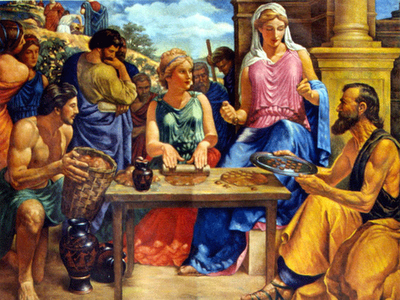
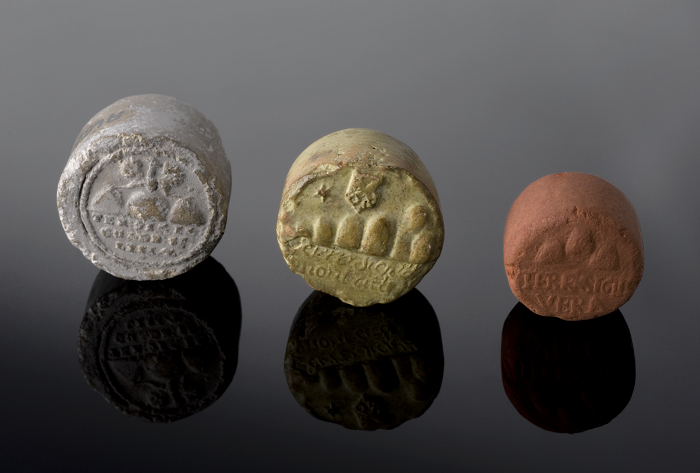 Terra Lemnia has been mentioned since ancient times as a material with various medicinal properties. They thought it had a hemostatic effect, it cured dysentery, relieved stomach ache, neutralized snake venom and as an ointment was suitable for eye inflammations.
Terra Lemnia has been mentioned since ancient times as a material with various medicinal properties. They thought it had a hemostatic effect, it cured dysentery, relieved stomach ache, neutralized snake venom and as an ointment was suitable for eye inflammations.
It was ritually mined from the point which Hephaestus had fallen in Lemnos island, after fighting with Zeus. According to the legend, he healed his wounds with help of Terra Lemnia. Also, Philoctetes using Terra Lemnia healed his wounded leg by a snake bite, as Philostratus mentions in his work “Heroic”.
It is first mentioned by Herodotus. Then many scholars and doctors of antiquity studied it, used it and wrote about it, such as: Theophrastus, Vitruvius, Pliny, Dioscorides, Flavius Philostratus etc. However, the one who spread the fame of the land was Galen from Pergamon, the greatest physician of antiquity after Hippocrates. In 167 AD he visited Lemnos to get an immediate opinion on it, attended the mining ceremony and bought 20,000 tablets.
The sporadic reports of various physicians of the Byzantine era, indicate that its extraction and use continued during this long period. They have it in mind: Alexandros Tralianos, Aetios Amidinos, Cassianos Vassos, Pavlos Aeginitis, Leon doctor, Theofanis Nonnos, Simeon Magistros, while referring to Syrian and Arabic medical works. Since the Renaissance, its fame has reached Europe. As a result, almost all travelers who visited or wrote about Lemnos until the 19th century, refer to it.
In ancient times, the ceremony of mining the Terra Lemnia was consecrated by a priestess who came from the capital of Lemnos, in Hephaestia, on May 6, early in the morning so that the soil is soft from moisture. It was then transported to the city, where after relative processing, it was packed in tablets and sealed in the form of a goat or the goddess Artemis.
It was the first standard medicine in the history of medicine.
In Christian times the ceremony was combined with the feast of the Savior (Agia Sotira) and took place on August 6. The seal bore the form of Christ and was called holy soil.
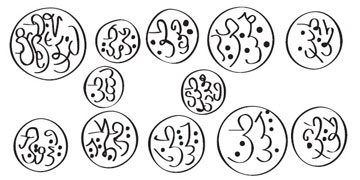 During the years of Ottoman rule it was sealed with the crescent or other official Ottoman seals that wrote ‘agioxoma’ (sealed clay). In Europe it was known as “terra lemnia” or “terra sigillata” (sealed land). The ceremony had the character of a celebration that concerned the whole island. It was performed by a Christian priest in the presence of officials, Greeks and Turks, and crowds, as described by Belon (1548) and appears in a relevant 16th century woodcut (Thevet).The right to exploit the thermal land belonged to the Turkish soubasis and later to the hodja of the nearby village of Agios Ypatios, where the processing and sealing took place. Part of the soil was given to those who where present at the ceremony, strictly for personal use, while from the 17th century a quantity was given to local potters until the beginning of the 20th century.
During the years of Ottoman rule it was sealed with the crescent or other official Ottoman seals that wrote ‘agioxoma’ (sealed clay). In Europe it was known as “terra lemnia” or “terra sigillata” (sealed land). The ceremony had the character of a celebration that concerned the whole island. It was performed by a Christian priest in the presence of officials, Greeks and Turks, and crowds, as described by Belon (1548) and appears in a relevant 16th century woodcut (Thevet).The right to exploit the thermal land belonged to the Turkish soubasis and later to the hodja of the nearby village of Agios Ypatios, where the processing and sealing took place. Part of the soil was given to those who where present at the ceremony, strictly for personal use, while from the 17th century a quantity was given to local potters until the beginning of the 20th century.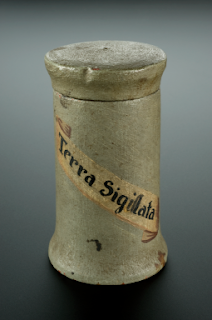
<<terra Sigillata>>
Science Museum London
The position, which it was mined form, is located on Despotis hill, between the villages of Repanidi, Kotsinos and Varos, south of the church of the Savior. Apparently, the hill “Despotis” owes its name to the governor of the island, who bore the title “Despot of Lemnos” in the late Byzantine years and logically dominated the position of the land of Lemnos.
We have the last mining report in August 1916: “Actions of Mr. Evangelou, Mr. Tsoukalas and Mr. Sideras on the feast of the Transfiguration, made the Community of Repanidi to decide the repetition of the Ancient Religious ceremony that has always been performed by Christians and Ottomans. Before sunrise, the inhabitants of Repanidi went on the hill where it was mentioned that Terra Lemnia was exported, and after the sanctification, the excavation began so they can find Terra Limnia (holy soil). As soon as it was found, everyone was going to the pilgrimage to receive this sacred soil, which according to the ancient tradition was a medicine against all poisonous insects. The potters received this holy soil for the construction of pipes, cups and glasses, which in ancient times were considered miraculous and were sent to the Sultans of Constantinople. This soil extracted only on the day of ‘Metamorfosi toy Sotiros’ (the feast of the Savior) and it is also used by the inhabitants as a medicine against the frenzy, and they used to drink it after being placed in sanctified water”. The chapel of the Savior is mentioned since 1320 as a patriarchal exarchate with the name Christ the Savior in Paleolakko, where as Paleolakko we must consider the point of extraction of Terra Lemnia, which had taken the form of a well from long-term mining and was covered so as not to dry out. The chapel continued to exist in the same place near the Ftelidia spring, as evidenced by descriptions of travelers throughout the Ottoman rule. (Belon 1548, Thevet 1554, Covel 1677, Dapper 1688, Choiseul-Gouffier 1785, Conze 1858, Fredrich 1904). It took its current form in 1950, while inside it an icon from 1880 is preserved.
Both past and present analyzes reveal that Terra Lemnia consists mainly of silicate clay and alumina. It also contains a high percentage of iron oxides (4-6%) which give it a characteristic brown-red color. Its hue is called “medium reddish brown” and is designated as the number 43 of the global color atlas with the name Terra Lemnia.
